The first official notice that preparations were underway for a major Israeli philatelic event and that the event would be virtual in nature came in the October 2020 issue of the Israel Philatelic Federation's quarterly publication, Shovel (No. 119). At the time, late September and early October, SARS-CoV-2 infection rates in Israel were soaring, outdoor movement was restricted, in-person gatherings were prohibited, and an online exhibition made perfect sense. An article by Yoram Lubianiker (יורם לוביאניקר) in the February 2021 issue of Shovel (No. 120) elaborated on the project's background and provided details on what the stamp collecting public could expect. Building on the experience of earlier exhibitions forced online by the coronavirus pandemic, in particular India's Philavirtu in October 2020, Lubianiker promised an interactive event that would showcase new exhibits and old, veteran exhibitors and first-timers, and video content to take the place of real-life guides.
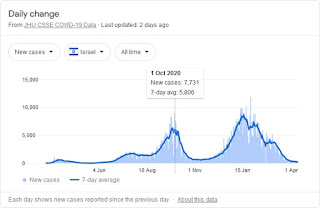 |
| נגיף קורונה בישראל, גרף יומי SARS-CoV-2 in Israel, daily chart |
In short, NetBul 2021 went live under radically different circumstances than those under which it was originally conceived, and this is the reason why only eleven of its seventeen exhibits are explored in this report. It's also the reason why, although the eleven exhibits reported on below are ranked from best to worst, I abstained from casting a vote for any of them. Each frame, usually consisting of sixteen pages, demanded around two hours to properly evaluate. Multiply that by forty-one frames, and the total number of hours one would need in order to fully view and assess the exhibition would equate to 82. That level of investment might have been possible during the peaks of the pandemic with their attendant lockdowns, but not in March 2021. Since it felt unfair to penalize exhibits for no fault of their own, voter abstention prevailed as the appropriate course of action.
 |
| נטבול 2021: עברית, אנגלית NetBul 2021: Hebrew, English |
Where the website set itself apart from others in its class was with the video content, which was integrated discreetly into the overall layout. Each of the exhibition's five classes had a corresponding instructional video in Hebrew and English, as did the exhibition as a whole. Especially for someone visiting a philatelic exhibition for the first time, these videos, recorded by Yoram Lubianiker, were both a valuable resource and a refreshing touch. They gave context and direction, shone a spotlight on details meriting special attention, and added life to an otherwise inanimate experience. Moreover, nine of the seventeen exhibits had their own videos, recorded by the exhibitors themselves. It is regrettable there were not more, as these videos enhanced the appeal of the exhibits to which they were attached. As far as web design goes, NetBul's only flaw involved adjusting the size of and scrolling up and down the individual exhibit pages. Depending on one's device, the process of enlarging and dragging a page around on the screen differed and took some trial and error to get the hang of. All in all, the NetBul website was as close to flawless as websites come -- enough to earn it a score of 9.5 out of 10.
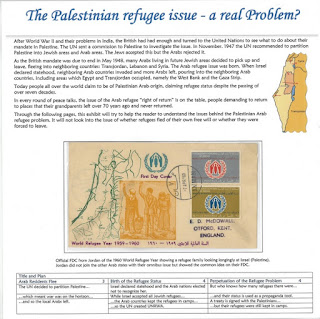 |
| לורנס פישר Lawrence Fisher |
Lawrence Fisher's single-frame exhibit (12 pages, English, ☑video) examined a major sticking point in peace negotiations between Israel and its Arab neighbors: how to resolve the status of inhabitants who were displaced as a result of the 1948 and 1967 Arab-Israeli wars who either claim Palestinian refugee status or have had that status forced upon them by their host governments and by the international community. Fisher went beyond presenting his material in a strictly historical-philatelic spirit, engaging with it also on an emotional-polemical level. While that approach ran the risk of alienating some viewers, in relating his exhibit's content to the present day Fisher succeeded in making the exhibit more accessible and relevant to the general public.
Fisher's exhibit benefited from a clearly laid out title page, stylized page headers, an easy-to-follow narrative, and brief captions contextualizing the philatelic material within the narrative. These would seem like basic prerequisites to any exhibit, but most exhibitors were careless in their attention to these aspects, focusing heavily on the philatelic material to the glaring neglect of the exhibit's other components. Fisher elegantly blended two layers into his exhibit: material illustrating the theme of Palestinian refugees and material demonstrating various postal realities at the time the refugee crisis developed. One item, for example, was a registered letter mailed on 12 May 1948 from Haifa to an Arab gentleman by the name of Tewfik Habash in Jerusalem. The cover featured Minhelet Ha'Am stamps, which were only valid from the 2nd to the 14th of that month, and a postal marking of "DESTINATAIRE PARTI," indicating that Mr. Habash no longer resided at his address. Another item was a special cancellation mark from 19 March 1996 celebrating the inauguration of a train station in Tel Aviv. Due to an attack earlier in the month by Palestinian terrorists, a core component of whose agenda is the destruction of Israel as a Jewish state by, among other means, the resettlement of Palestinians refugees inside Israel proper, the train station's opening ceremony did not take place until May 5th.
Memorable items:
 |
| מעטפה מן העיר אדינבורו אל הדינגטון Letter from Edinburgh to Haddington |
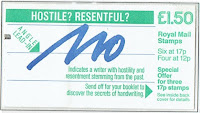 |
| ספרון בולים של הדואר המלכותי Royal Mail stamp booklet |
🏅 Judges: 88/100, tied for places 2-4, Gold medal
 |
| גנדי ברמן Genady Berman |
Genady Berman's single-frame exhibit (16 pages, English, ☒video) tracked the gradual shift of the postal service in Crimea from a Ukrainian- to a Russian-administered entity as a result of the change in de-facto sovereignty over the territory following Russia's seizure of it in 2014. The annexation of Crimea by Russia is not only still fresh in the world's mind, its implications vis-a-vis the rivalry between East and West for geopolitical hegemony remain far-reaching in importance. Although Israel does not have a proverbial dog in the fight between Russia and Ukraine and an exhibit devoted to the post in Crimea might seem out of place in an Israeli exhibition, Berman's exhibit showcased five covers sent to and from Israel that offer unique insights into the topic under examination. He thus succeeded in making Israel relevant to the exhibit and in making the exhibit relevant to Israel.
Berman's exhibit, positioned at number 16 out of NetBul's seventeen total exhibits, benefited from a clean, crisp, bright esthetic that was a relief to the eyes after too many exhibits with discolored paper and disorienting layouts. Comprehensive in scope, Berman's exhibit featured material from each of the four stages the Crimean post underwent in its accelerated transition from a Ukrainian entity to a Russian one. Furthermore, each stage was divided into three components -- stamps, tarrifs and postmarks -- and Berman furnished material demonstrating the manner in which each component was affected by the transition at each stage. The exhibit opened with a cover mailed from Crimea to Ukraine proper on 16 March 2014 that passed through the postal system as a Ukrainian letter handled by a Ukrainian postal administration, and it ended with a cover mailed from Ukraine proper to Crimea on 28 November that was returned as undeliverable. Other than an unfortunate mix-up of pages 7 and 8, it is genuinely puzzling that judges saw fit to dock Berman's exhibit twenty-eight points.
Memorable items:
 |
| מכתב מן העיר סבסטופול אל חרקוב Letter from Sevastopol to Kharkiv |
 |
| מכתב מן העיר חולון אל ג'נקוי Letter from Holon to Dzhankoi |
🏅 Judges: 72/100, tied for places 13-15, Silver medal
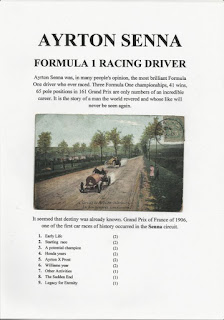 |
| פאולו דואק Paulo Duek |
Paulo Duek's single-frame exhibit (16 pages, English, ☑video) explored the professional career of Brazil's three-time Formula One champ Ayrton Senna (1960-1994). Even if one had no prior interest in auto racing going into NetBul, Duek's exhibit succeeded in capturing the excitement of the sport and in conveying the legendary aura that surrounds Senna in the eyes of his admirers. That one of Duek's other NetBul exhibits, "King Pele," won the Popular Vote Award suggests Duek has a knack for leaving lasting impressions on his audience.
The weakest component of Duek's exhibit was undeniably its prose, but that was compensated for by a rich diversity of philatelic material and a video narrated in Hebrew with a strong Brazilian accent. Is it fair to factor an exhibit's video content into an evaluation of the exhibit itself? Yes. If the video is there, it is part of the exhibit. There were also instances where the relevance of a piece of philatelic material to the narrative was unclear. One such example was a "Brasil -- Campeão de Fórmula 1" souvenir sheet from 1983 with the years 1972, 1974 and 1981 appearing on the selvedge. Duek introduced three-time Formula One champ Nelson Piquet as a rival of Senna in the caption, but Piquet won his Formula One championships in 1981, 1983 and 1987. If there was any connection between Piquet and the souvenir sheet or between the souvenir sheet and the narrative, it was not made sufficiently clear.
Memorable items:
 |
| גלויה וחירור של פירלי Pirelli & C. postcard and perfin |
 |
| חותמת מן העיר מוגי-מירים Fancy cancel from Mogi Mirim |
🏅 Judges: 78/100, tied for places 9-10, Vermeil medal
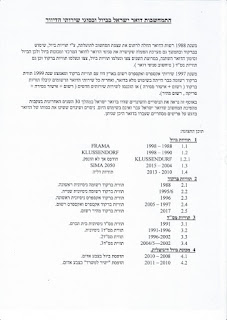 |
| אלון כהן Alon Cohen |
Alon Cohen's single-frame exhibit (16 pages, Hebrew, ☒video) explored Israel Post's move beginning in 1988 to computerize its operations in an effort to increase efficiency and reduce errors. For stamp collectors, this move is a sensitive topic because automation necessarily comes at the expense of traditional methods and the personal touch of human hands. In an automated world, there is no need for postage stamps and hand-cancels, and the language of machines is not words but number strings and scannable symbols.
Cohen's exhibit was impressive primarily on account of its comprehensiveness -- particularly as it included philatelic material going back to the late 1980s whose significance few people at the time had the foresight to appreciate, let alone preserve. On the other hand, reading Cohen's prose was like chewing on rocks owing to an abundance of run-on sentences, sentence fragments and poor punctuation. What emerged from Cohen's exhibit was that the postal system is not static and stagnant but evolving. It recognizes its shortcomings and seeks to improve, to modernize, often experimentally. It introduces an innovation, and if the innovation proves successful it establishes it as the new standard. If not, it tries other approaches until it hits on one that achieves the desired result.
Memorable items:
 |
| תוויות קלוסנדורף Klussendorf ATM labels |
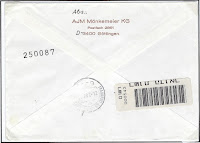 |
| מעטפה מן העיר גטינגן אל ירושלים Letter from Göttingen |
🏅 Judges: 82/100, 7th place, Vermeil medal
5. Baruch Weiner (ברוך וינר): "Israeli POW Mail from 1948-1949"
(15 pages, English, ☒video)
🏅 Judges: 80/100, 8th place, Vermeil medal
6. Les Glassman (לס גלסמן): "Pre-Philatelic Postal History of Jerusalem"
(16 pages, English, ☑video)
🏅 Judges: 85/100, 6th place, Gold medal
7. Menachem Lador (מנחם לדור): "2nd Oldest Profession -- Intelligence Services"
(40 pages, English, ☑video)
🏅 Judges: 88/100, tied for places 2-4, Gold medal
8. Baruch Rotberger (ברוך רוטברגר): "'Seven Species' Praising the Land of Israel"
(64 pages, Hebrew, ☒video)
🏅 Judges: 73/100, 12th place, Large Silver medal
9. Genady Berman: "Taxi Post Labels of Israel"
(16 pages, English, ☒video)
🏅 Judges: 72/100, tied for places 13-15, Silver medal
10. Genady Berman: "Ways of Payment for Postage in Ukraine 1991-1996"
(16 pages, English, ☒video)
🏅 Judges: 78/100, tied for places 9-10, Vermeil medal
11. Pavel Shaiman (פבל שיימן): "The World Remembers"
(63 pages, Hebrew, ☒video)
🏅 Judges: 58/100, 17th place, Bronze medal
Final thoughts


No comments:
Post a Comment